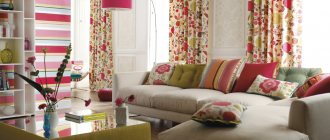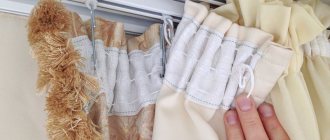Hi all! Creating a beautiful and practical interior in a frame house, in a country house or in an ordinary high-rise building often becomes the task of the immediate home owner. One of the pressing issues is how to hang a shelf on the wall.
This procedure may seem extremely simple and mundane. But not everyone knows how to act so that the fasteners are not visible, or what to do correctly if the walls are made of PVC, that is, of plastic panels, brick, shingles, lining and other common materials.
Today I will try to answer key questions, talk about the features of installing shelves and existing installation methods. You will get some answers from the video. And if you still have questions, you can always ask them in the comments.
Types of shelves
Basically, shelves are divided by design, methods of fastening and materials of manufacture. The most common types are the following:
- Classic shelves. Most often you can find this type of shelf in stores, because it is easy to install and reliable;
- Shelves with hidden fasteners. Unlike ordinary shelves, these are mounted on the wall using special fittings that are invisible;
- Floor structures. They are otherwise called shelving, and some believe that they are a type of cabinet. But racks differ from them in the absence of doors, and sometimes even a back wall. Such designs look light and do not clutter up the space, so they are especially relevant in the minimalist style and in small rooms. Also, the rack is inferior to the cabinet in terms of shelf depth.
The installation method is influenced not only by the type of structure, but also by the material of manufacture. In addition, the quality of the shelves, functionality and their appearance depend on it. Some styles require special furniture made from natural materials. For example, a plastic shelving would be inappropriate in Provence - only wood is used here. But for a loft or hi-tech it’s worth looking for metal shelves.
The shelves are made from:
- Tree. These can be either expensive species, or chipboard, MDF, etc.
- Metal. Usually the frame is made of it, but some shelf models can be completely metal.
- Glass. Glass shelves can often be found in a bathroom or shelving design. It can be matte or transparent.
- Plastic. The cheapest type of shelves, which is not durable or high quality. Plastic shelves are hung mainly in the children's room, in the kitchen or in the bathroom.
Useful tips
Even if you think that you don’t know how to hang a shelf correctly, you shouldn’t immediately call a professional. All you need to do is show a little effort and diligence, and you can easily get the job done. If, for example, you also need a shelving unit hung in the closet, then you can first practice on it, and then move on to working in rooms where there is finishing.
In addition, the greater the planned load on the fixed rack, the stronger the fasteners should be used. After all, over time, they may weaken, and the shelf will fall with all its contents. And this is extremely undesirable. Therefore, it is not recommended to skimp on bolts, as this can have negative consequences.
DIY apartment renovation
or wall cabinet correctly How to hang a shelf in a bathroom where the walls are finished with ceramic tiles? How to hang a shelf on drywall, the main qualities of which are not strength? Similar questions arise quite often. Although there is no difficulty here. After reading this review, you will see for yourself and can easily hang any shelf on the wall with your own hands.
What to consider when installing shelves
Before hanging a shelf, you need to pay attention to some installation nuances:
- Approximately determine how much load will be placed on the shelf.
- What will the shelf be used for?
- What type of fastening is required?
The most important thing here is the load. The type of fastener, installation method and location of the shelf depend on it. Large wall shelves require much more secure mounting than small plastic decorative shelves. Another feature is the purpose of the shelf. It should be located at a convenient height so that each family member can easily get the necessary thing. If you are equipping a home library, those books that are rarely read can be placed on high hanging shelves. But it is better to store your favorite literature in a rack.
Consider shelving as a way to zone a room. This technique is relevant in studio apartments, where you need to divide the space into several work areas. Shelving easily copes with this and can separate the kitchen from the living room, the bedroom from the nursery and any other areas.
In a children's room, the height of the shelves is responsible not only for convenience, but also for the safety of the child. They should be a little taller than his height, but not too low, because the baby is growing quickly. The most practical option is a small floor rack. Place your child's favorite toys on the bottom shelves so that he can easily reach them, and on the top - what he uses least often.
How to hang a shelf evenly using electrical tape and a level
The first thing you need to do is decide where the shelf will hang. Consider several important points at once: the shelf should not be located too high so that it is convenient to take things from it, and it should not interfere with you in the room.
Related article: Rating of acrylic paints for walls
Once you decide on the “where to hang?” question, move on to the “how to hang?” part. If you have a brick wall, then for measurements you can use electrical tape, which can be easily glued to the wall and then removed. To accurately mark the points where you need to screw in the screws, we recommend that you first measure the distance between the hinges on the shelf, and then cut a piece of electrical tape of the same size. Next, determine the point where the screw for one of the hinges will be located, apply a level (now the shelf will definitely hang straight!) and stick electrical tape over it.
Now all that remains is to drill holes close to the electrical tape with a drill, hammer in the dowels and screw in the screws. After peeling off the tape, you can safely hang the shelf!
Preparing to install shelves
Before drilling, you need to know exactly where the wires are laid so as not to accidentally cut off the power to the wall. This is not always easy to find out, so if you do not have a wiring diagram in your apartment, purchase a special hidden wiring detector. Make sure that the chosen mounting method is acceptable and that the load exerted by the shelf on the wall is moderate. After this, you need to mark the attachment points. This can be done in different ways: either pre-fix the hinges, or attach the shelf to the wall and mark the places for them. The first option is preferable, as it is more accurate and convenient.
Be sure to use a level when working - it will help track distortions and unevenness of the wall.
Tools for working with wall shelves
To hang the shelf, you will need the following tools:
- Drill. Its type depends on the material in which holes need to be drilled. If it is foam concrete, drywall and similar surfaces, a hand drill will do just fine. When working with a concrete wall, you cannot do without a hammer drill.
- Drills and bits. The wall may be stronger than expected, so having a set of extra drill bits on hand can be very helpful.
- Level. An indispensable tool designed to check the wall for distortions and unevenness.
- Screwdriver. Using a screwdriver will make the shelf installation process faster and easier.
- Pencil, ruler and other small items.
Safety precautions when installing shelves
To avoid injury and damage, you must strictly follow safety precautions. Before starting installation, be sure to:
- Wear gloves, safety glasses and a mask.
- Check the power tool: there should be no mechanical damage. Before you start drilling into the walls, check if it works well.
- Make sure that there is no electrical wiring in the place where you plan to hang the shelf.
- The workplace must be comfortably equipped. Remove all objects that may interfere.
Features of hidden shelf fastenings
Installing a shelf using a hidden suspension has a number of features and differs from conventional installation:
- Consider the wall material. Shelves with hidden fastenings are not recommended to be hung on walls covered with plasterboard. If the surface is brick, its thickness should be more than 25 cm, and if it is concrete, it should be at least 10 cm.
- Shelf thickness. It should be in the range from 3 to 6 cm, the best option is 4-5 cm.
- Type of fastener. Choose pins whose length is equal to twice the width of the shelf. Also pay attention to the diameter - it should be more than 10 cm.
- Load. Each type of shelf has its own weight restrictions that need to be taken into account. This can be found out upon purchase.
How to hang a shelf if the wall is made of plasterboard
Material such as drywall is now in great demand. Installing shelves on walls sheathed with it differs from traditional methods, so special fastening systems designed for drywall can be found on sale. They greatly simplify the process and make the fastening reliable.
A shelf on a plasterboard wall can be hung in different ways:
- Special fastening systems. They are called molly or butterfly screws. Their use is allowed if a large load on the shelf is not expected.
- Power frame. Plasterboard sheets are installed on it.
- To Wall. Sometimes drywall may not adhere tightly to the wall. In this case, the shelf can be hung directly on the wall.
Mounting methods
Let's start with the fact that you can only get by without a drill or hammer drill as a tool for installing shelves when installing light decorative structures on soft walls, which can simply be penetrated with a self-tapping screw and a screwdriver.
But usually you need to use an auxiliary power tool. Especially when you need to install a heavy shelf that will be subject to a significant load on the wall:
- from plasterboard;
- made of concrete;
- brick;
- from aerated concrete;
- from foam blocks;
- wooden, etc.
The first thing you need to pay attention to is the material from which the walls are made. Here it will become clearer to you whether you can do without drilling the wall or not.
When planning how to mount shelves on a wall, the type or method of fixation plays a key role. To do this, you need to study the installation options to choose the most acceptable and suitable for you.
- No visible fastenings. This is a hidden fastener that allows you to make the fastenings invisible, and make the shelves themselves light and elegant. Suitable for brick, concrete, foam and aerated concrete walls. If this is a plasterboard partition less than 10 cm thick, it is better not to use installation with invisible fasteners;
- On brackets. It will not be possible to hide them, and therefore the brackets will remain visible. To save money, some are mounted on plastic or metal corners. But to create a beautiful interior, it is better to use appropriate brackets. Visible brackets do not suit all interior styles;
- Using holders. Relevant for shelves made of glass. There are rubber or silicone based gaskets that protect the glass from destruction. Shelf holders have different types and configurations, including suction cup options;
- On hinges and corners. The most common and easiest to implement method. Using hinges and corners of certain sizes, you can reduce or increase the load that the shelf can withstand. Fastening is carried out using guides or on metal stands;
- Through the bar. Relevant for hollow walls, where it is not possible to fix the shelf directly to the wall. First, a metal or wood strip is mounted, and the shelf itself is fixed to it. Suitable for those whose walls are made of thin plasterboard, hollow brick and other similar materials. Here it is important to fix the bar at the maximum number of points. Some fasteners will go into the void, but others will definitely catch. It will not be superfluous to know in advance about the location of the partitions.
The greatest number of questions are raised by fastening with invisible fasteners, as well as working with plasterboard walls. They are proposed to be considered separately.
The nuances of invisible fasteners
It makes no sense to talk in detail about this method of installing wall shelves if you carefully understand only 3 main issues.
- Thickness of the wall used. Installation with invisible fastening is possible in situations where it is a brick or concrete wall. Moreover, the concrete partition must have a minimum thickness of 105 mm, and the brick partition - 250 mm. If the parameters are smaller, you will have to use additional elements. Cinder block and plasterboard walls with a thickness of less than 100 mm are suitable only for hanging decorative shelves on which there is no load or it is minimal;
- The thickness of the shelf itself. It is not recommended to use shelves that are too thin or too massive. The material should not sag, must be dry and have a high-quality finish. If the load on the shelf is minimal, the thickness is selected from 30 mm. If the shelf is for books and other heavier objects, the thickness is taken in the range of 45-60 mm;
- Fastening. Fasteners are selected based on point 2 and the purpose of the shelf itself. Invisible fastenings are made in the form of a hinged loop and a rod. The loop is mounted on the back of the shelf and markings are made. A hole is made in the wall and a plug is inserted inside. Next, all you have to do is screw in a screw or self-tapping screw to the desired depth and attach the hinges to them.
Be sure to consider the expected load to avoid unnecessary problems. The higher the load, the more hidden fasteners need to be used. Remember to have a sense of proportion.
Attaching a shelf to a concrete wall
Concrete walls are the strongest and most reliable. They can withstand almost any load, but installing shelves here is correspondingly more difficult. You can’t do without a hammer drill and drills designed for concrete surfaces.
If you don't have a hammer drill, you can try making holes using an impact drill. But this is not the best way - most likely, its power will not be enough.
How to hang heavy shelves
When choosing a shelf, you must know exactly what load is expected. The size of the load-bearing surface, as well as the method of fastening, depend on the weight of the items stored on the shelf. If you plan to place large items on it, for example, pillows, blankets and bed linen, choose long shelves about 100-120 cm.
When storing heavy items, the maximum shelf length is 85 cm. Vertical support may also be required to prevent sagging. Place heavy objects so that their weight rests on supports. For a home library, it is better to give preference to shelves about half a meter long. This is not only convenient, because you don’t have to reach high, but also reliable - the shelves in the rack have more support points, and therefore are more practical than wall-mounted ones.
When installing shelves for heavy objects, you need to take into account the thickness of the wall, the permissible weight and the number of places for fasteners. The shelf can simply be hung on the wall without additional power frames, but it is still worth using them. There is especially no need to neglect additional methods of fastening in the case when the shelves are hung above a sofa or bed - there is a possibility that they will not withstand the load.
The structure of the wall also affects the fastening elements. For example, a shelf can be attached to a foam block using special dowels, dowel nails or an anchor.
Drilling and tightening
It is not enough to purchase a high-quality dowel; you also need to install it correctly. To drill a hole and tighten a screw, you will need special power tools: a hammer drill, a drill and a screwdriver (Bosch, Kress, Metabo, Germany; DeWALT, Skil, Black & Decker, USA; Hitachi, Makita, Japan, etc.). We will talk about their functionality using the example of household products from Bosch. It's good if you have an impact drill in the house (such as the PSB1200-2 RPE). It has three operating modes: drilling, hammer drilling and screw driving (screwdriver function). An impact drill can be used to drill holes in medium-density stone, concrete and brick, as well as wood and metal.
The drilling depth limiter allows you to obtain a hole of a given size. The rotation speed is adjusted during operation using the on/off button. At the same time, our drill also has a speed switch. The slower the drill operates, the more powerful its impact on the material and the larger the hole can be made. And vice versa, the higher the speed, the smaller the hole, but the work goes faster. In addition, thanks to the speed switch, you can adjust the tightening force when tightening screws in screwdriver mode.
To make a hole in a reinforced concrete wall, you will need a hammer drill. Such tools operate in two or three modes: drilling, hammer drilling and impact. In our example, we used a three-mode rotary hammer RVN 2000 RE. He can also drive screws if necessary. In heavy materials (concrete, brick), working with a hammer drill is faster and more convenient: there is no vibration typical of a drill, and you need to put in much less effort (and you have to rest against the drill).
Tips for women, life hack for men.
For any power tool, operation at low rotation speeds (that is, at low speeds) under high load is contraindicated. If you stop the tool with great force while pressing the on/off button, the electric motor may burn out. True, with screwdrivers, the “ratchet” is triggered at a critical moment. The Bosch 1200-2 RPE impact drill has a safety shutdown function. But for rotary hammers and conventional drills, low speeds are like death. That is why it is not recommended to use these tools to tighten screws without sufficient skill.
And one more nuance. Reverse can only be switched when the drill has stopped completely (after turning off the button, it continues to rotate for some time). It is necessary to protect tools from falls from great heights and from becoming clogged with dust and other construction debris. To prevent drill flour from getting into the chuck when drilling in the ceiling, you can close it with a regular lid for home canning (drill a hole in the lid and put it on the chuck).
To drive screws and self-tapping screws, bits are inserted into screwdrivers. They differ in diameter (marking 0, 1, 2, 3, 4, etc.), length (25 - 150 mm) and profile. The simplest option is slotted bits for self-tapping screws with a longitudinal line in the middle of the head. Phillips screws are tightened with bits marked PH
(Philips).
Another type of bit - PZ
(Pozidrive) is used to tighten fasteners, which, in addition to the cross, also have additional slots.life hacking comes from the English word life hacking and is a slang term borrowed from the IT lexicon. Life hack means
a little trick or useful advice that helps solve one or another everyday problem.
Close Russian equivalent words: “ savvy
”, “
recipe
”, “
nahodka
”. A set of methods and techniques allows you to save time by “hacking” the surrounding life and established incorrect stereotypes. Skills simplify the process of achieving your goals by mastering various useful tips and clever little tricks.Life hacking includes questions: how to hang a shelf, a picture, or unscrew a broken light bulb from its socket; how to stand in line less or remember your phone number or PIN code; how to complete more complex tasks faster and how to spend less time commuting to work.
Drills and rotary hammers are powered from the mains, which is not always convenient. In addition, they have a fairly decent weight. And if you need to drill a hole at a height for a new cornice, then with such a tool it will take seven sweats until the job is done. Heavy lifting exercises can be avoided by using the Uneo hammer drill. Of course, it is inferior in power to its full-size “colleagues”, but it is not tied to an outlet (it is powered by lithium batteries) and is quite lightweight. And if you consider that in everyday life you usually need holes with a diameter of no more than 10 mm, then this “baby” is a real find not only for active housewives, but also for experienced home craftsmen.
Another good thing is a screwdriver. Its main purpose is to drive screws. But with a screwdriver you can drill holes in “light” walls. The tool has a special “ring” (torque switch), on which numbers from 0 to 10 are printed. The higher the number, the higher the torque and, therefore, the power of the screwdriver.
Common mistakes when installing shelves
Inexperienced people may hang the shelf incorrectly, and errors will appear after installation is completed. To avoid this, remember that:
- The length of the drilled hole should be slightly longer than the length of the screw.
- Foam concrete is a rather low-density material, so ordinary hardware cannot be used for fastening. They will not stick to the wall, moreover, they can destroy it. Plastic dowels, metal fasteners and chemical anchors should be used.
- If the load vector is directed perpendicular to the axis of the drywall sheet, the wall will simply break. To avoid this, special dowels for drywall are used: Driva dowel, butterfly dowel and Molly anchor.
- Heavy structures are attached exclusively to load-bearing walls.
- You need to carefully select fasteners that will match the type of shelf and be suitable for the wall material.
Modern types of furniture fasteners
Specialized departments offer many types of furniture fasteners. Almost all of them belong to the same type, this is a threaded screw. The design consists of a wide bolt and nut. During the assembly process, they tightly fix the various parts together. They are used to make kitchen tables, cabinet and upholstered furniture.
- bolts with driven nuts. The main advantage of such products is their reliability. The product is strong;
- confirmation It belongs to the screw type of fastener. The principle of operation resembles self-tapping screws or a hex screw. These products ensure quick assembly of the furniture structure, as well as its aesthetic appearance;
- eccentric couplers. Almost all high-quality products consist of such elements. They provide good fixation of each part. In addition, they allow you to increase the speed of assembly;
- wooden corners. This type was used more than ten years ago, but due to their reliability they are used for the production of modern furniture.
The stores offer a catalog of furniture fasteners. It concentrates more than 100 types of metal products for the production of one or another type of furniture paraphernalia.











